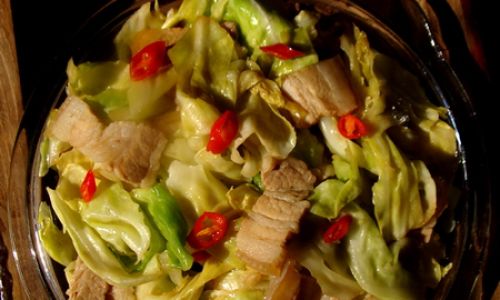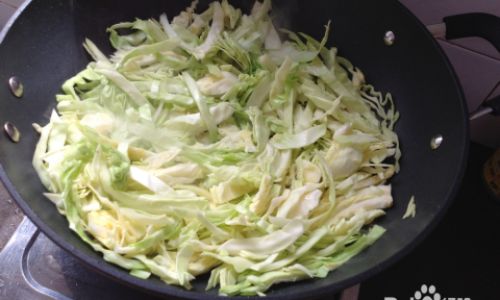Dried cabbage, a pantry staple in many kitchens, offers a unique blend of convenience, flavor, and nutrition. Often overlooked, this humble ingredient can transform ordinary meals into extraordinary culinary experiences when prepared correctly. Whether you’re a seasoned home cook or a novice in the kitchen, mastering the art of cooking with dried cabbage opens doors to endless possibilities. This article delves into the secrets of rehydrating, seasoning, and cooking dried cabbage to perfection, ensuring every bite bursts with umami-rich goodness.
Understanding Dried Cabbage
Dried cabbage is typically made by shredding fresh cabbage leaves and dehydrating them through sun-drying, air-drying, or commercial methods. The process concentrates the vegetable’s natural flavors, resulting in a product that is both lightweight and long-lasting. Unlike fresh cabbage, which can wilt quickly, dried cabbage retains its texture and taste for months, making it an ideal ingredient for stockpiling or emergency provisions.
Nutritionally, dried cabbage is a powerhouse. It retains most of the vitamins and minerals found in fresh cabbage, including vitamin C, vitamin K, and fiber, while losing excess water content. This makes it a healthy addition to soups, stews, and stir-fries. However, the key to unlocking its full potential lies in proper preparation and creative cooking techniques.

Rehydration: The First Step to Flavor
Before cooking, dried cabbage must be rehydrated to restore its tender texture. The process is simple but requires attention to detail to avoid over-soaking, which can lead to mushiness.
- Cold Water Soak: Place the desired amount of dried cabbage in a bowl and cover it with cold water. Let it sit for 20–30 minutes, or until the leaves soften. Drain excess water and pat dry with a kitchen towel.
- Quick Boil: For a faster method, bring a pot of water to a boil, remove it from heat, and submerge the dried cabbage. Let it steep for 10–15 minutes, then drain.
Pro Tip: Add a pinch of salt to the soaking water to enhance the cabbage’s natural sweetness.
Stir-Fried Dried Cabbage: A Crispy Delight
Stir-frying rehydrated cabbage with aromatic ingredients creates a dish that’s both crispy and flavorful. Here’s a classic recipe:
Ingredients:
- 1 cup rehydrated dried cabbage
- 2 tbsp vegetable oil
- 1 tbsp minced garlic
- 1 tbsp soy sauce
- 1 tsp sesame oil
- 1 red chili, sliced (optional)
- Salt and pepper to taste
Instructions:
- Heat the vegetable oil in a wok over medium-high heat. Add garlic and chili, stirring until fragrant (30 seconds).
- Toss in the rehydrated cabbage and stir-fry for 3–4 minutes until slightly caramelized.
- Drizzle with soy sauce and sesame oil. Season with salt and pepper. Serve hot with steamed rice.
Variation: Add diced tofu, shredded chicken, or mushrooms for protein.

Hearty Soups and Stews
Dried cabbage adds depth to broths and stews, absorbing flavors while maintaining its structure. Try this comforting recipe:
Ingredients:
- 1 cup rehydrated dried cabbage
- 4 cups vegetable or chicken broth
- 1 carrot, diced
- 1 potato, cubed
- 1 onion, chopped
- 2 tbsp olive oil
- 1 tsp smoked paprika
- 1 bay leaf
- Fresh parsley for garnish
Instructions:
- Sauté onions in olive oil until translucent. Add carrots and potatoes, cooking for 5 minutes.
- Stir in smoked paprika and bay leaf, then pour in the broth. Bring to a boil.
- Add rehydrated cabbage, reduce heat, and simmer for 20–25 minutes until vegetables are tender.
- Remove bay leaf, season with salt and pepper, and serve with crusty bread.
Pro Tip: For a richer flavor, add a splash of red wine or tomato paste during sautéing.
Comforting Casseroles and Bakes
Dried cabbage shines in baked dishes, where it meld with cheeses and herbs. Try this cheesy cabbage bake:
Ingredients:

- 2 cups rehydrated dried cabbage
- 1 cup shredded cheddar cheese
- ½ cup breadcrumbs
- ¼ cup heavy cream
- 2 eggs, beaten
- 1 tsp Dijon mustard
- 1 tbsp fresh thyme leaves
- Salt and pepper
Instructions:
- Preheat oven to 375°F (190°C). Grease a baking dish.
- In a bowl, mix cabbage, cheese, cream, eggs, mustard, thyme, salt, and pepper.
- Transfer to the baking dish, top with breadcrumbs, and bake for 30–35 minutes until golden.
Variation: Add cooked bacon bits or caramelized onions for extra richness.
Refreshing Salads
Rehydrated cabbage can also star in crisp salads, offering a chewy texture contrast.
Ingredients:
- 1 cup rehydrated dried cabbage
- 1 apple, julienned
- ½ cup walnuts, toasted
- ¼ cup dried cranberries
- 3 tbsp apple cider vinegar
- 2 tbsp honey
- 1 tbsp olive oil
- Salt to taste
Instructions:
- Whisk vinegar, honey, olive oil, and salt for dressing.
- Toss cabbage, apple, walnuts, and cranberries in the dressing. Serve chilled.
Pro Tip: Add crumbled feta or goat cheese for creaminess.

Crispy Snacks and Appetizers
Turn dried cabbage into addictive snacks by frying or baking.
Ingredients:
- 1 cup rehydrated dried cabbage
- ¼ cup all-purpose flour
- 1 egg, beaten
- 1 tsp garlic powder
- Oil for frying
Instructions:
- Mix cabbage, flour, egg, garlic powder, salt, and pepper.
- Form small patties and fry in hot oil until golden (2–3 minutes per side).
- Drain on paper towels and serve with aioli or sweet chili sauce.
Variation: Bake at 400°F (200°C) for 15 minutes for a healthier option.
Pairing and Serving Suggestions
Dried cabbage’s versatility allows it to complement various cuisines:
- Asian-Inspired: Pair with ginger, soy sauce, and sesame seeds.
- European Flavors: Combine with caraway seeds, butter, and apples.
- Spicy Kicks: Toss with chili flakes, lime, and cilantro.
Storage Tips
To maintain quality, store dried cabbage in airtight containers in a cool, dark place. Properly stored, it can last up to a year. Once rehydrated, use within 3 days.

Conclusion
Dried cabbage is a culinary chameleon, equally at home in hearty stews, crispy snacks, and refreshing salads. By mastering rehydration techniques and experimenting with flavors, you can elevate this humble ingredient into a star player on your table. Whether you’re seeking comfort food or a quick weeknight meal, dried cabbage delivers—proving that sometimes, the simplest ingredients hold the greatest potential. So next time you reach for that bag of dried cabbage, remember: with a little creativity, you’re just a stir, simmer, or bake away from culinary magic.






0 comments